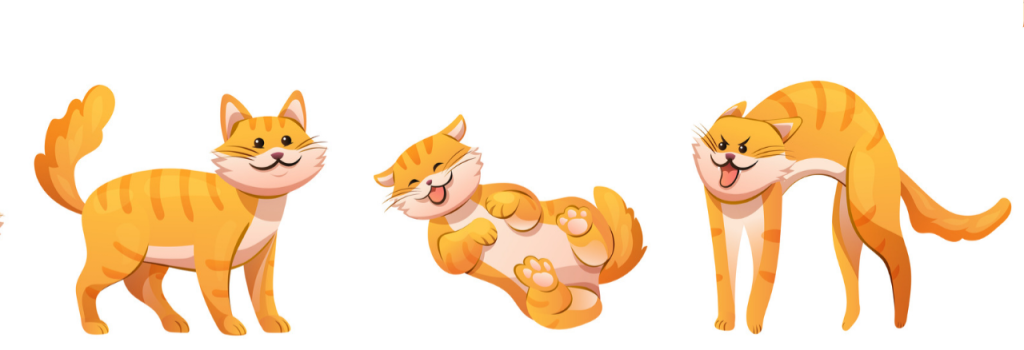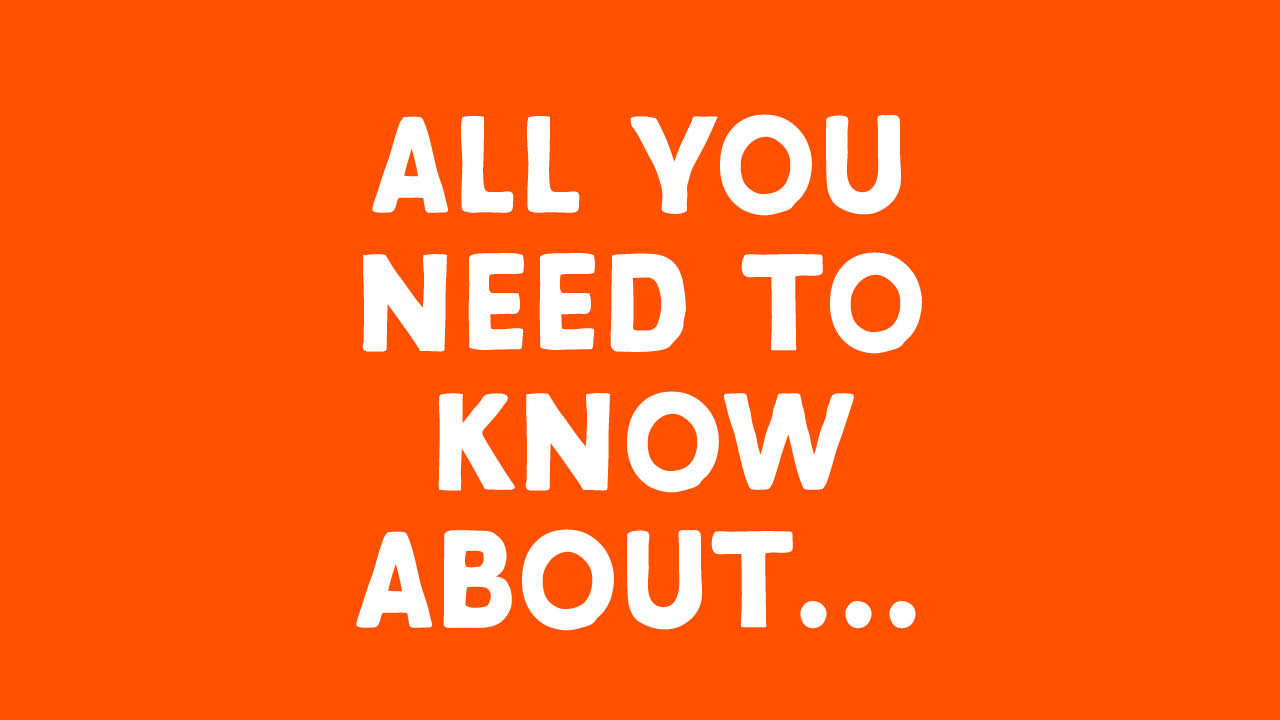The language of cats, body language. People often find cats hard to read, even though they send out loads of communication. Key when trying to understand the body language of cats, is taking the context into consideration. It is important to look at the physical cues, but also the situation in which they take place. By understanding the language of cats better, we can adjust the way we approach them, and prevent unpleasant situations for us, but also our cats.
Happy/relaxed cat
A happy cat has its tail either upright or loosely positioned down, the tip of the tail can be curved. Usually, the cat will walk towards you as a greeting. Happy cats might also roll on their back and show their belly. This sign of trust and greeting, should not be confused with asking for belly rubs, as most cats will not appreciate this. The whiskers and ears will be in a neutral position. A happy cat will have a soft expression in the eyes and will blink slowly. The eyes might also be half closed.
Excited/playful cat
The eyes will be widened, and ears will be shifted forward. The whiskers will be fanned out and facing forward. The body is relaxed, but the tail will be upright and possibly quivering at the tip.
Stressed/anxious/fearful cat
A stressed, anxious, and/or fearful cat will have wide eyes and will usually pull its ears flat against their head. They will stay close to the ground, and sometimes try to crouch low and hide. The tail will be tucked under the body and can make a fast swishing motion. Make sure to give anxious and/or stressed cats the space they need.
A cat that feels threatened/scared/angry
When a cat feels threatened and/or scared, they will arch their back. The tail usually will be tense too. Their fur will stand up, and the whiskers will be pointing forward. This all to make themselves look big in the hope the scary thing goes away. A cat that is very scared tends to hiss or even swipe at whatever it is, that is making them feel scared and uncomfortable.

Tail
The tail is an important part of the body cats use to express themselves. The position and movements will say things about their state of mind. A thumping or trashing tail is often a sign of irritation, anger, or annoyance. When a cat quivers its tail, this usually indicates they are excited about seeing you or another cat, but is also done when urine marking. A twitching tip of the tail is seen when hunting, playing or when mildly irritated. Wrapping the tail around a human’s leg is a friendly gesture. A friendly and confident cat will carry the tail upright, while a puffed up tail means the cat feels scared and/or threatened.
Body
The way a cat places its body, says something about their intentions. Often, cats will point their body towards the direction they are likely to go. A cat that has its body facing sideways, might feel shy and place its body like this so they can easily escape. A cat that positions its body towards you, most likely feels confident and relaxed with your presence.
Ears
A cat that has its ears high and straight up, is usually feeling alert or excited. When the ears are facing forward, but in a relaxed manner, most likely they are feeling calm and confident. Flattened down ears that are pulled against the head mean anger and/or fear.
Eyes
When you see the pupils of a cat dilated, this means they are stimulated. We see this for example when they are hunting, but also when they are feeling anxious. It’s important to use context and the rest of the body signals to decide what the reason is for the dilated pupils. A cat that is feeling comfortable will usually blink slowly.
Sounds
Cats make several sounds to communicate. Cats can growl as a warning, and they will hiss when they feel threatened. Obsessive meowing and/or yowling is usually due to underlying illness, pain, loneliness, or stress. Yowling is also seen when a cat feels out of options. A chirping cat most of time is excited or frustrated, and It is also seen when their hunting instinct kicks in. A trill sound is a friendly family greeting.
Purring
Often purring is seen as a sign of a happy cat, but this is only the case if the rest of the body language of the cat is relaxed. Sometimes, cats purr in stressful situations like going to the vet, or even when in pain. When interpreting purring, it is always important to look at the rest of the body language the cat is showing.
The language of cats
Isn’t as much of a mystery as it might seem. Using the knowledge we have about cat language and the signals they send, we can adjust the way we engage with them. For example, you can prevent making any strong “ss” sounds, as this sound puts cats off because it sounds like hissing and is seen as an unfriendly gesture. Staring is also seen as a threat and should be avoided. When a cat is feeling anxious and/or stressed we can give them space and make sure we only engage when they are comfortable doing so. All our pet sitters are experienced in reading cat body language and will react accordingly while ensuring that all their interactions are also force free, fear free, and pain free.
If you would like more information about our cat sitting and cat relocation services. Feel free to contact us.

